Join More Than 50,000+ Subscribers and get latest camera news and rumors
NEW CAMERA VIDEOS ON YOUTUBE
|
By admin, on September 13th, 2023
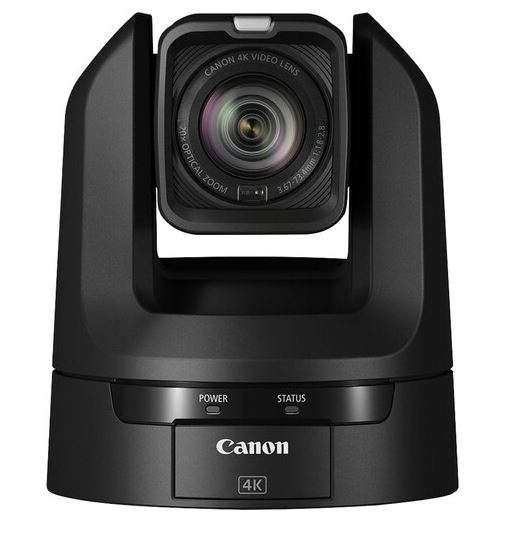
Canon Latest Sept 2023 Announcements – 4K PTZ Camera & RF-Mount Cinema Prime Lenses
1. Canon Announces CR-N100 4K PTZ Camera and Flagship RC-IP1000 Remote Camera Controller
-
The new CR-N100 4K PTZ is designed for indoor use-cases and brings the excellent image quality and performance that Canon PTZ cameras are known for at a lower price point.
-
Canon is also introducing the RC-IP1000, a high-end remote camera controller designed for professional systems.
-
As a free download, Canon will also release the Multi-Camera Management Application that streamlines the configuration and management of supported Canon PTZ, professional video, and cinema cameras.
Canon CR N1 Cameras at B&H Store
2. Canon Announces the Company’s First Set of RF-Mount Cinema Prime Lenses
-
Canon U.S.A. announced today the introduction of the company’s first RF-Mount Cinema Prime Lenses for the Cinema EOS System.
-
The new lenses combine high optical performance for 4K and 8K shooting, cinema-style operability, and RF mount communications.
-
The first set of seven RF-Mount Cinema Prime Lenses is only the beginning. Canon plans to swiftly expand the lineup of RF-mount-compatible video production equipment to meet the needs of professional video production of such content as movies, TV, and commercials.
Pricing and Availability
The seven new Canon RF-Mount Cinema Prime Lenses estimated retail pricing and scheduled availability* are as follows:
Specification sheet of all NEW RF Mount Cinema Lenses here
Canon 4k PTZ Camera Press Release
Canon Announces CR-N100 4K PTZ Camera and Flagship RC-IP1000 Remote Camera Controller
MELVILLE, N.Y.,September12, 2023 –Canon U.S.A., Inc., a leader in digital imaging solutions, announced today theCR-N100 4K PTZ camera. The camera is designed for indoor use-casesand brings the excellent image quality and performance that Canon PTZ cameras are known for at a lower price point. Canon is also introducing the RC-IP1000, a high-end remote camera controller designed for professional systems. As a free download, Canon will also release the Multi-Camera Management Application that streamlines the configuration and management of supported Canon PTZ, professional video, and cinema cameras.
Canon CR-N100 4K PTZ Camera and Multi-Camera Management Application
As online meetings, lectures, liveevents, and seminars become increasingly commonplace, there is a growing need for livestreaming and video recording technology. The CR-N100 camera provides excellent image quality, fast autofocus, and its compacti size allows for easy installation inspaces such as meeting rooms and classrooms. With the addition of the CR-N100 to Canon’s lineup of remote cameras, customers now have greater choices of products that support a wide range of uses, from professional video production to video content use by markets such as corporate, local governments,house of worship, and educational institutions.
The CR-N100 showcases key features that leverage Canon’s history of professional camera technology development, including a 1/2.3” CMOS sensor and a DIGIC DV6 image processor platform that helps to produce 4K/30P high-image-quality video capture. In addition, the camera is equipped with a 20x optical zoom lens with a focal length of 29.3mmー601mmii, supporting image capture ranging from wide-angle to telephoto scenarios. The camera also includes four “scene modes”—Portrait, Sports, Low-light, and Spotlight—which users can choose to create theircontent based on the subject.
Users canbuild a complete, versatile production environment thanks to the CR-N100’s supportfor avariety of video interfaces and IP streaming protocols. The CR-N100 supports NDI|HXiii for high-quality – low latency video and control, SRTiv for secure high-quality video streaming over public networks, and RTP/RTSP/RTMP(s) for live streaming over popular social networks. The CR-N100 also supports Canon’s XC protocol for easy integration into new and existing Canon production environments.The CR-N100 also supports HDMI and the USB Video Class (UVC) transmission standard. UVC allows the CR-N100 to be used as a camera for web conferencesystems simply by connecting it to a PC via USB.
To help with the initial configuration of supported Canon PTZ, professional video, and cinema cameras, Canon is also releasing the Multi-Camera Management Application (MCMA). MCMA enables users to batch-configure initial camera settings as well as manage cameras, making it ideal for corporate, education, and events that require multi-camera environments,such as livestreaming of university lectures and live event broadcasting.
With the Multi-Camera Management Application (MCMA), up to 200 individual camera units can be managed for use in large-scale camera systems. The MCMA streamlines the registration of usernames, passwords, and IP addresses to a camera and the registration of cameras to the RC-IP1000 by executing these procedures all at once, instead of individually. This allows for rapid initial configuration of large-scale systems with minimal workload. What’s more, the status of all connected cameras can be viewed in a convenient list that enables easier execution of operationssuch as updating firmware, restarting, and initialization.
Canon RC-IP1000 Remote Camera Controller
The Canon RC-IP1000 is a high-end controller that provides multiple functions and easy operation required for professional remote video production workflows, meeting the needs of various environments, including broadcast, house of worship,and live event streaming. The RC-IP1000 was designed with ease-of-use in mindand features direct functional buttons and dials ideally positioned and angled for simple operation, as well as an easily visible 7” touch-panel. The controller supports both IP and serial control, and can remotely perform Pan, Tilt, and Zoom (PTZ) movements, and the user can configure and change settings, including focus, exposure, and image settings. The RC-IP1000 is compatible with popular broadcast industry 12G-SDI input for 4K/60P, as well as visual input via IP and HDMI video output. The touch panel can display live video of cameras in single, 2×2, and 3×3 page layoutsfrom cameras via IP, enabling simultaneous operation of multiple camera units.
Pricing and Availability
The Canon CR-N100 4K PTZ Camera is scheduled to be available in early October for an estimated retail price of $1999.00*.
By admin, on September 13th, 2023
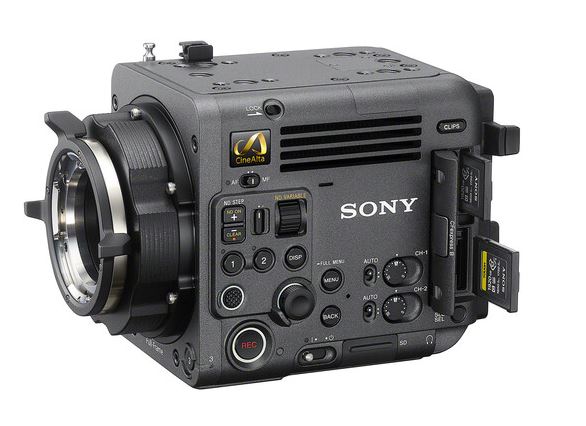
Sony Burano is a lightweight CineAlta Series professional camera without any sacrifice in performance.
Sony Burano Major Features
- Compact, Highly Mobile Design
- Full-Frame CMOS 8.6K Sensor
- 16 Stops of Dynamic Range
- In-Body Image Stabilization|E & PL Mount
- Dual-Base 800/3200 ISO Range
- Electronically Variable 0.6-21ND Filter
- Phase Detection AF | Face/Eye Tracking
- Full-Frame & Super35 Sensor Modes
- Supports Multiple Frame Rates & Codecs
- Dual CFExpress Type B Card Slots
Available at B&H Store from $25k
Sony Burano Press Release
(ASIA PACIFIC, 13 September 2023) — Sony is pleased to announce the new BURANO camera as part of the CineAlta lineup – the company’s top line of digital cinema cameras. The new BURANO features a sensor that matches the colour science of the VENICE 2 and is specially designed for single-camera operators and small crews. This camera combines exceptional image quality with high mobility and is the world’s first digital cinema camera with a PL-Mount to feature in-body image stabilisation. In addition, the compact housing includes for the first time both a thinner-than-before electronically variable ND filter structure alongside the optical image stabilisation mechanism, a technological feat never achieved previously. When removing the PL lens mount, the camera can be used with E-mount lenses and supports fast hybrid AF and subject recognition AF, even perfect for fast-moving subjects.
Main Features: Powerful 8.6K Full-Frame Sensor
Using the widely appreciated colour science of the VENICE cameras, BURANO features an 8.6K full-frame sensor that shares most of the VENICE 2 specifications enabling it to work alongside that camera in all types of productions. The sensor features dual base ISO of 800 and 3200 and 16 stopsof latitude to produce stunning images even in the most challenging lighting conditions.
Like all cameras in Sony’s full-frame Cinema Line, BURANO will have the ability to shoot at full-frame, Super 35, and also features a de-squeeze function for anamorphic lenses. It can film at frame rates including up to 8K at 30 frames per second, 6K at 60 frames per second or 4K at 120 frames per second.
BURANO features a compact and lightweight body for high mobility, approximately 32mm shorter and 1.4kg lighter than the VENICE 2 camera. BURANO is housed in a rugged magnesium chassis, making it suitable for filming in the most challenging environments. The camera and accessory packaging bags materials are made primarily of plant-based cellulose instead of plastic as part of Sony’s efforts to be environmentally conscious. Moreover, a moulded pulp cushion is used on the camera as the cushioning material, thus not using expanded polystyrene.
Built In Optical Image Stabilisation
BURANO is the world’s first digital cinema camera with PL-mount to support in-body image stabilisation. With a newly developed image stabilisation mechanism and control algorithm that leverages the advanced image stabilisation technology cultivated in the Alpha™ series of mirrorless interchangeable-lens cameras, unwanted camera shake, such as movement from shooting handheld or walking, can be corrected when shooting with an E-mount or PL-mount lens.
Variable ND Filter for added control and exposure optimisation.
BURANO is equipped with an electronic variable ND filter from 0.6 to 2.1, enabling easy adjustments in various lighting conditions. In addition, the electronic variable ND filter allows control of the depth of field with the iris and adjusts to the optimum exposure without changing the depth of field.
E-mount lenses for an increased choice
More than 70 E-mount lenses can use the excellent image stabilisation function cultivated with Alpha™, as well as Fast Hybrid AF that combines the benefits of phase detection and contrast detection method and are also compatible with high-precision Subject Recognition AF using AI. Using an E-mount lens further reduces the weight and size of the camera.
Updated Body Design for greater ergonomics
BURANO also includes design improvements based on feedback from the filmmaking community. For example, all menu buttons are positioned on the camera operator’s side. Additionally, tally lamps are placed in three locations to make it easier for the surrounding crew to check the shooting status. The 3.5-inch multi-function LCD monitor can be used as a viewfinder, for touch focus, or menu control. The BURANO also comes equipped with an optional robust T-handle, viewfinder arm, two 3-pin XLR audio inputs, and a headphone terminal (stereo minijack), convenient for solo operation.
Recording Formats for added workflow flexibility.
The BURANO can record from HD to 8K depending on the resolution, aspect ratio, and codec. BURANO supports multiple internal recording formats, such as the new XAVC H for 8K, which uses the MPEG-H HEVC/H.265 high compression efficiency codec. Other recording formats include XAVC and X-OCN LT. X-OCN is Sony’s original compressed RAW format that can capture information shot with 16-bit linear data, which gives filmmakers more freedom in post for colour grading. X-OCN LT can reduce file transfer time and storage size load, making post-production workflows more efficient than standard versions of RAW data.
BURANO is also equipped with two new CF express Type B memory card slots and supports VPG400, which can sustain high bitrate writing of video data, including X-OCN LT 8K. Sony will also be releasing new compatible CFexpress Type B memory cards, CEB-G1920T (1920 GB)/ CEB-G960T (960 GB).
Versatile and Efficient Production Ecosystem
BURANO supports various log recording modes including S-Gamut3 and S-Gamut.Cine, which are colour spaces that cover a colour gamut exceeding BT.2020 and DCI-P3. BURANO can reproduce the same colour as all cameras in Sony’s Cinema Line, including the VENICE 2. This allows filmmakers to match cameras within the line.
BURANO comes with four new cinematic looks: Warm, Cool, Vintage, Teal, and Orange, in addition to supporting industry standard s709 and 709 (800%) Look Up Tables (LUTs).
Furthermore, like the VENICE series amongst others, BURANO can be used for virtual production using large screen LED displays such as Sony’s Crystal LED VERONA. The camera also features gen-lock.
Sony will be releasing separately the GP-VR100 Grip remote control for the BURANO’s main unit, to control the zoom lever and recording start / stop button, particularly useful in solo shooting set ups.
BURANO will support the S700 protocol over ethernet and a 1.5x de-squeeze display function when using anamorphic lens in July 2024 or later. Further updates based on user feedback and suggestions will be rolled out in the future.
Continuous enhancement of Cinema Line in both hardware and software
Cinema Line is a series of camera products for content creators, which delivers not only the coveted cinematographic look cultivated through extensive experience in digital cinema production, but also the enhanced operability and reliability that meet discerning creators’ various needs. Set to continuously evolve, Cinema Line currently includes the high end CineAlta cameras VENICE, VENICE 2, BURANO, as well as the various FX models and the unique FR7 PTZ camera. From a software perspective, the newly launched mobile app, Monitor & Control , part of the Sony Creators’ Cloud can be used with the FX3, FX30 amongst others. The app, designed with visual creators in mind, enables wireless video monitoring, support for high-precision exposure determination using false colour and waveform monitors, and intuitive focus operation of compatible cameras, on the screen of a smartphone or tablet. BURANO will also be compatible with this app.
Availability
The BURANO, CFexpress Type B memory cards, CEB-G1920T (1920 GB)/ CEB-G960T (960 GB) and new GP-VR100 Grip remote control (sold separately) will be available in Asia Pacific from March 2024 or later.
By admin, on September 13th, 2023

Fuji GFX100 II features a newly redesigned sensor, the readout speed of the sensor is now 2X improved, microlenses to upscale the image quality are updated as well, and the sensor is now paired up with the company’s latest ‘X Processor 5’ chip to deliver a range of features, many of which were first seen on the X-H2 cameras. With the introduction of the new image processor IBIS performance is also improved upto 8 Stops.

Fuji GFX 100 II Major Features
- 102MP BSI CMOS 44x33mm medium format sensor
- AI-derived subject recognition AF system
- In-body image stabilization rated at 8EV
- Continuous shooting at up to 8fps
- Extensive video options including 8K and anamorphic support
- 9.44M dot OLED EVF
- Waveform and Vectorscope display for video
- Direct record to SSD
- Camera to cloud support
- IPTC metadata
The Fujifilm GFX100 II will be available from September 2023 at a suggested price of $7499.
Get the camera from B&H Store
Follow us on our social pages FACEBOOK | TWITTER | INSTAGRAM, –> See More Fuji Rumors Or subscribe to us via Email
Fuji GFX 100 II Press Release
Fujifilm Bolsters its Flagship Camera Lineup with Launch of FUJIFILM GFX100 II Mirrorless Digital Camera
VALHALLA, N.Y., September 12, 2023 – FUJIFILM North America Corporation today announced the introduction of FUJIFILM GFX100 II digital camera (GFX100 II), a new flagship addition to the GFX System’s family of mirrorless digital cameras. Incorporating a 55mm large-format image sensor1 – which is nearly 1.7x larger than the 35mm image sensors found in full-frame cameras – GFX100 II produces images with broad dynamic range at a very shallow depth-of-field.
GFX100 II includes a newly developed, 102-megapixel high-speed image sensor and Fujifilm’s latest 5th generation X-Processor 5 image processing engine, which doubles the signal readout speed compared to the current model2. This in turn provides unique benefits to image makers, especially in the areas of high-speed, continuous shutter mode, autofocus (AF) and video.
“Imaging professionals rely on FUJIFILM GFX System cameras and lenses to take their bestimages to another level,” said Victor Ha, vice president, Electronic Imaging Division and Optical Device Division, FUJIFILM North America Corporation. “GFX100 II is another incredible design and engineering feat for Fujifilm. We’re incredibly excited to see the new creative heights that will be achieved with this camera when it gets into the hands of our photographers and filmmakers.”
GFX100 II utilizes Fujifilm’s latest high-speed image sensor, along with its advanced image processing engine to deliver Artificial Intelligence (AI) based subject-detection autofocus (AF), which was most recently featured in the FUJIFILM X-H2S mirrorless digital camera. Developed with Deep Learning technology and updated with the latest prediction AF algorithm, GFX100 II now incorporates AI based subject-detection AF to quickly track and detect animals, birds, vehicles, and other fast-moving objects like insects and drones3, and it automatically keeps them in focus so that photographers can concentrate on framing their images and waiting for the perfect moment to make their image.
Burst shooting performance has been increased from the current4 5.0 frames per second to 8.0 frames per second5, expanding the GFX100 II’s application across various genres, including fashion, commercial, landscape, sports, and photojournalism. An expanded buffer memory4 extends seamless burst capabilities for those once-in-a-lifetime moments.
GFX100 II’s new sensor also provides enhanced capabilities for video production. The ability to internally record Apple ProRes 4:2:2, 10-bit video at 4K/60p and 8K/30p is a major first for GFX System cameras. With the use of an optional, third-party GF to PL lens adapter, multiple video recording formats can be natively accommodated on GFX100 II, making the FUJINON PREMISTA 35mm lens and Anamorphic (35mm) cinema lenses easily adaptable for various uses including cinematic applications. Additionally, GFX100 II supports three Apple ProRes codecs, i.e., Apple ProRes 422 HQ, Apple ProRes 422 and Apple ProRes 422 LT. When recording in Apple ProRes, the camera can also output h.264 and Apple ProRes 422 Proxy files, which can streamline workflows overall from production to post-production.
GFX100 II also features Ethernet, HDMI Type A, and USB-C terminals for enhanced external device connectivity. Dual card slots support one CFExpressTM Type B and one SD card. CFExpressTM Type B cards are required to access the GFX100 II’s enhanced video performance features. Production workflows are additionally streamlined with the camera’s native, accessory free integration for Frame.io Camera to Cloud, which seamlessly delivers files directly to the cloud, and Atomos AirGluTM BT, which allows timecode on GFX100 II to be accurately jammed and synchronized across various compatible accessories, audio recorders, and other hardware and software products that are commonly used in video production.
GFX100 II includes a total of 20 Film Simulation modes, including the new REALA ACE mode, which is based on Fujifilm’s color negative film, offering a neutral color reproduction suitable for all subject types. Additionally, Fujifilm’s innovation of the pixel structure has enabled the use of ISO80 as a standard sensitivity. When the sensor sensitivity is set at
ISO80, the camera can make images with incredible dynamic range and noise levels that are lower than previous GFX100 and GFX100S models. The new sensor’s photosites have been optimized to increase light use efficiency at the sensor’s edges, thus improving both image quality at the edges of the photo, and AF accuracy over the previous, GFX100 and GFX100S models.
Hardware enhancements include a five-axis, in-body image stabilization (IBIS) that provides up to 8-stops of image stabilization, as well as 1.0x viewfinder magnification, and a high- magnification, high-definition 9.44-million-dot EVF. The camera’s new design also features a large, sub-LCD, tilted top panel, and a fashionably textured grip.
Optional Accessories
- FUJIFILM VG-GFX II Vertical battery grip (VG-GFX II) accommodates two NP-W235 batteries for extended image- and video-making opportunities.
- FUJIFILM FAN-001 Cooling fan (FAN-001) allows for extended video filming in high temperatures.
- FUJIFILM EVF-TL1 EVF tilt adapter (EVF-TL1) provides diverse shooting angles while using the viewfinder.
Pricing and Availability
GFX100 II is expected to be available in early fall 2023 at a Manufacturer’s Suggested Retail Price of $7,499.95 USD and $10,124.99 CDN. The pricing for the optional accessories is expected to be as follows:
VG-GFXII – $499.95 USD and $679.99 CDN
By admin, on September 12th, 2023
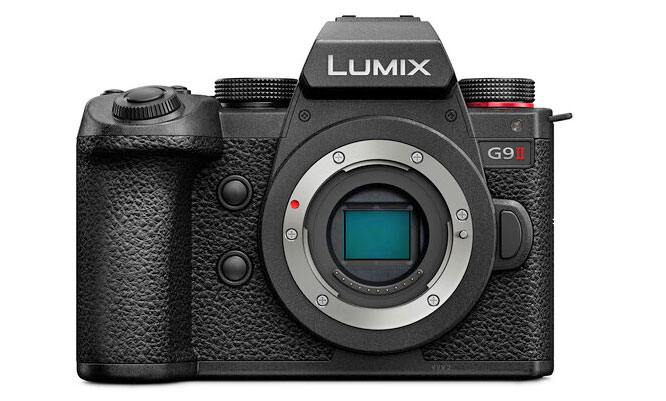
Panasonic G9 II is a successor of the original Panasonic G9 which was announced 6 years ago, After a long gap of time Panasonic finally decided to upgrade its still photography dedicated camera, the G9. Yes, we do have video series like the GH6 dedicated to Cinematographers, and on the other side, we have the G9. The Major key ingredient to this update is the newly developed 25MO M4/3 Format Sensor with 779 Hybrid Phase AF points. With the implementation of the new Phase AF technology, the camera AF system now upscaled and does AF more quickly and precisely, either you are shooting a human, bird animal, or car the AF system does its job.

Panasonic G9 Mark II Major Features
- 25MP CMOS sensor
- 5-axis in-body image stabilization (CIPA-rated to 8 stops)
- On-sensor phase detection (779 points)
- 3″, 1.84M-dot fully articulating touchscreen
- 3.86M-dot OLED electronic viewfinder with 0.8x magnification
- 60 fps burst shooting with AF-C and electronic shutter (10 fps mechanical)
- 100MP handheld high-res mode
- Up to 5.8K Open Gate 4:2:0, C4K 4:2:2 10-bit, with V-Log
- ProRes 422 and 422 HQ recording to SSD
- Full-size HDMI
- 390 shots per charge battery life, using LCD
- USB-C power delivery, external SSD support
- Dual UHS-II card slot
- Wi-Fi + Bluetooth
The Panasonic will be available from early November with a recommended price of $1899 body-only. This is a $200 price increase from the launch price of its predecessor, the G9.
Get a Panasonic G9 Mark II Camera from the B&H Store
Panasonic G9 II Full Specification PDF
https://www.scribd.com/document/670801751/Panasonic-G9-II-Specificaion
Panasonic G9 II Press Release
Capture the Decisive Moment
- New Sensor and New Engine Boasting Outstanding Photographic Performance
- PDAF technology implemented in LUMIX G Series for the First Time
- Flagship Micro Four Thirds Model for Still Images with Improved High-Speed Performance and Ergonomics
Newark, NJ (September 12, 2023) – Panasonic is proud to announce the launch of the LUMIX G9II digital mirrorless camera, equipped with a new sensor and Phase Detection Auto-Focus (PDAF) technology. The LUMIX G9II is the first camera in the Micro Four Thirds LUMIX G Series to feature PDAF technology.
In line with the growing need to produce highly creative artwork and photography using diverse methods, this new model creates high-resolution, high-quality images and rich colors straight out of camera. Furthermore, with a new auto-focus technology that combines Panasonic’s accumulated expertise in recognition technology with PDAF, and a high-speed burst shooting mode that ensures decisive moments are always captured, this new model boasts significantly improved power and high-speed performance. The camera supports photographers from various fields using a system that can be combined with the compact and lightweight LUMIX G Micro Four Thirds lenses for ultimate flexibility.
The new 25.2-megapixel Live MOS Sensor and new engine produce high-resolution images in outstanding quality with rich color tones, while the hybrid PDAF technology enables accurate auto-focus and high-speed tracking of fast-moving subjects. Moreover, burst shooting at 60 fps in AFC mode and SH pre-burst recording*1 that begins before the shutter is released ensures that the decisive moment is always captured, even with dynamically moving subjects.
LUMIX’s popular image stabilization system is further improved, combining 8-stop*2 B.I.S. (Body Image Stabilizer), 7.5-stop*3 5-axis Dual I.S. 2, and advanced Active I.S. for incredible video image stabilization. Together, these functions provide even greater support for handheld shooting of dynamic scenes that would previously have been difficult to capture. In addition, creators can enjoy enhanced monochrome photo styles with new LEICA Monochrome and REAL TIME LUT for preferred color settings. Through this next-generation digital mirrorless camera, Panasonic intends to respond to the needs of creators who are pursuing methods of creative expression that go beyond the boundaries of photography and videography.
Main features
1. Equipped with a new sensor, new engine, and the first PDAF implementation in LUMIX G Series for outstanding photographic performance and high-speed response
- New 25.2-megapixel Live MOS Sensor for high resolution and high-speed response (13+ stop*4 V-Log/V-Gamut, Dynamic Range Boost*5)
- New engine that achieves natural, three-dimensional textured images and ensures high-speed processing of high bitrate video
- Use of new AI-powered recognition technology (developed using deep learning technology) for real-time auto-focus recognition that now recognizes cars, motorcycles, and animal eyes for improved precision in subject recognition
2. Advanced high-speed performance to ensure decisive moments is always captured
- Burst shooting at 60 fps in AFC mode and reinforced buffer memory for continuous burst shooting over three seconds for ensuring the capture of targeted moments
- SH pre-burst recording*1 that can begin shooting up to 1.5 seconds before the shutter is released and take approximately 113 consecutive shots
- Robust image stabilization system with 8-stop*2 B.I.S. (Body Image Stabilizer), 7.5-stop*3 5-axis Dual I.S. 2, with perspective distortion correction for video, and high mode for advanced Active I.S.
- Highly-mobile camera system combined with the compact, lightweight, and diverse range of LUMIX G Series lenses
3. New modes expand the possibilities of creative photography
- REAL TIME LUT function enabling personalized color expression through use of LUT files
- Enhanced monochrome mode with newly added LEICA Monochrome for deep black-white contrasts
- Hand-held 100-megapixel High Resolution mode and Live View Composite mode to expand the range of photographic options
4. A launching point for video creation
- 4:2:0 10-bit 5.8K (4:3) full sensor recording/ 5.7K (17:9) enables flexible framing options for various social media formats
- 4:2:0 10 bit C4K/4K 120p/100p enables slow motion videos
- Apple ProRes*6 video, which delivers high image quality at low compression, reducing the load on the computer during post-production and allows non-linear editing without transcoding, streamlining your workflow from start to finish.
- Recording and playback are supported using an external SSD via USB
- Active I.S. Technology corrects shake when shooting on the move
Pricing and Availability:
The LUMIX G9II will be available at valued channel partners in early November for $1899.99 MSRP.
By admin, on September 12th, 2023
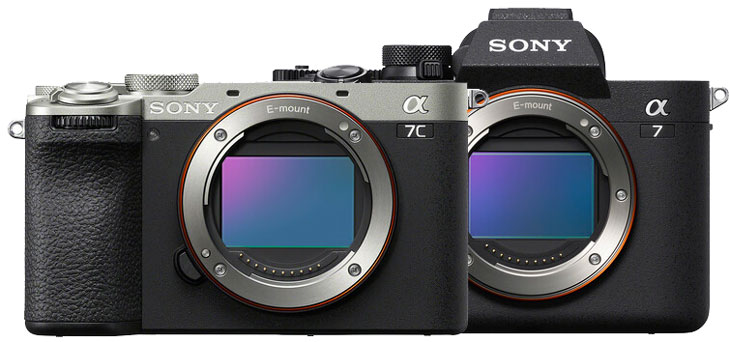
If you compare the Sony A74 versus the Sony A7C II, let me tell you one thing very clearly. The Sony A7C II camera features the same 33-megapixel full-frame CMOS sensor, Even the AF system of the Sony A7C II camera is much more advanced due to the presence of dedicated artificial intelligence CHIP inside, compared to the Sony A74 camera. Now, we all know that if a baseline product/product with a lower price range has as many special features as its higher-end body, then for sure it will cut off the sales of the A74.
To protect it, Sony added some layers of features and design cannibalization, which now depends upon us. Does this crippling hurt the camera’s core, or can we buy it despite the standard crippling done over Sony A7C II to save the Sony A7 IV sales? Which we will explain in this article.
| Lens Mount |
Sony A7C II |
Sony A7 IV |
| Sensor Resolution |
Actual: 34.1 Megapixel
Effective: 33 Megapixel |
Actual: 34.1 Megapixel
Effective: 33 Megapixel |
| Image Sensor |
35.9 x 23.9 mm (Full-Frame) CMOS |
35.9 x 23.9 mm (Full-Frame) CMOS |
| Image Stabilization |
Sensor-Shift, 7 Stops |
Sensor-Shift, 5.5 Stops |
| Built-In ND Filter |
None |
None |
| Capture Type |
Stills & Video |
Stills & Video |
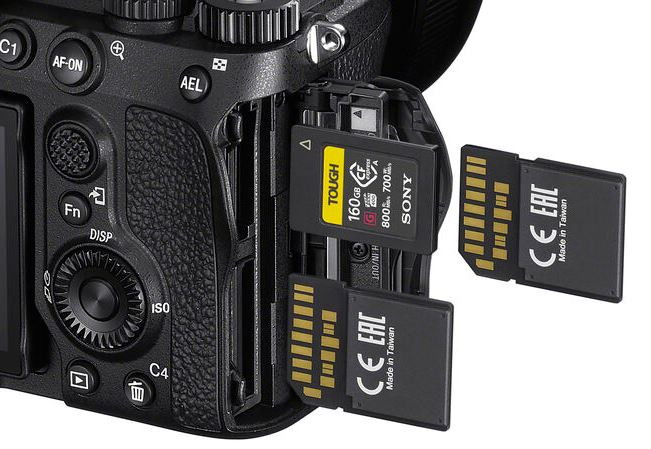
1. DUAL CARD SLOT
From the design point of view, there is a basic design difference between the two. The Sony A7C II camera has only a single card slot compatible with UHS-II V90 cards, while the Sony A7 IV camera features dual card slots in which you can have UHS-II and CFexpress in the other.
2. Full-size HDMI in Sony A7 IV
The other biggest advantage I see in the Sony A7 IV camera is the presence of a full-size HDMI port, which is missing in the Sony A7C II camera.
3. Anti-Dust Shutter in Sony A7IV
The Sony A7 IV camera also features an anti-dust settling mechanism that covers the sensor and protects it. In the Sony A7C II camera, we have an EFCS shutter, so due to the absence of a fully functional mechanical shutter, we do not have such a feature in this camera.
4. Display Difference
On the display side, the Sony A7 IV has a slightly higher resolution electronic viewfinder (3690k dotvs2360k dot) with a better magnification ratio, as well as a slightly higher resolution LCD screen (1.440k dots vs. 1.030k). The position of the viewfinder is also different in both cameras.
The rest of the things are the body controls. The Sony A7 IV camera has a bit more advanced features, such as a joystick controller on the rear side and a center-placed viewfinder, which generally helps a photographer a bit more in handling a camera and using it while composing a perfect shot
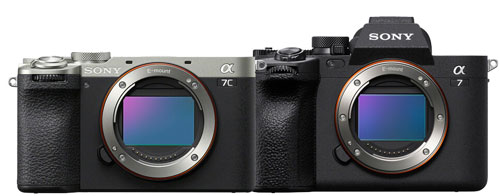

5. Size Difference
As you can see, the Sony A7C Mark II camera is more compact, whereas the A7 IV is a bit bulky. Due to the nature of construction and the type of series they belong to, both have their design interface. So, design-wise, for a professional photographer, undoubtedly the Sony A7 IV camera looks more promising.

6. Heat Sink
Heat Sink According to initial reports, the heat sink mechanism of the Sony A7C Mark II camera is slightly better at dissipating heat from the body in an outward direction. This is one of the biggest reasons why Sony skipped the CF express card in the A7C Mark II camera. With the use of a UHS-II V90 card (See V90 Cards at Amazon), you can record 4K at all resolutions without any major issues.
Does The Absence Of Full Mechanical Shutter Affect The Performance Of The Camera? It all depends upon your usage. If you want to capture portraits at a very high shutter speed which is somewhere around 1/4000 of a second up to 1/8000 of a second in that very specific scenario most cameras with mechanical shutters are not open to some of these special situations then undoubtedly, the A7C Mark II camera’s EFCS (Electronic Front Curtain Shutter) is very usable.
|
Sony A7C II |
Sony A7 IV |
| Shutter Type |
Electronic Shutter, EFCS |
Electronic Shutter, Mechanical Focal Plane Shutter |
| Anti Dust Shutter |
No |
Yes |
| Shutter Speed |
1/4000 to 30 Seconds
1/8000 to 30 Seconds
1/8000 to 1 Second in Movie Mode |
1/8000 to 30 Seconds
1/8000 to 1/4 Second in Movie Mode |
| Bulb/Time Mode |
Bulb Mode |
Bulb Mode |
| ISO Sensitivity |
Photo
100 to 51,200 in Manual Mode (Extended: 50 to 204,800)
100 to 12,800 in Auto Mode
Video
100 to 51,200 in Manual Mode (Extended: 50 to 102,400)
100 to 12,800 in Auto Mode |
Photo
100 to 51,200 in Manual Mode (Extended: 50 to 204,800)
100 to 12,800 in Auto Mode
Video
100 to 51,200 in Manual Mode (Extended: 100 to 102,400)
100 to 51,200 in Auto Mode |
| Exposure Modes |
Aperture Priority, Auto, Manual, Program, Shutter Priority |
Center-weighted average, Highlight Weighted, Multi-Zone, Spot |
| Continuous Shooting |
Up to 10 fps for up to 44 Frames (Raw) / 1000 Frames (JPEG) |
Up to 10 fps at 33 MP for up to 1000 Frames (Raw) / 1000 Frames (JPEG) |
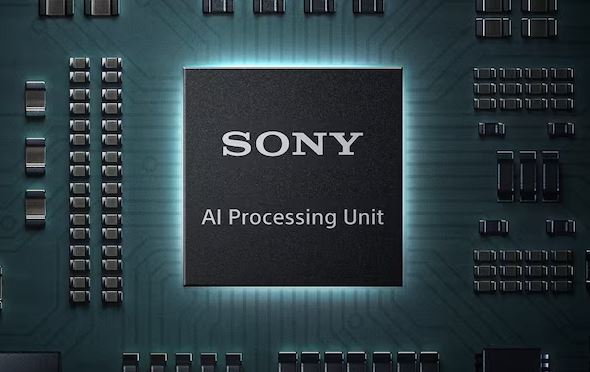
7. Dedicated AI CHIP
AI Chip The introduction of a dedicated artificial intelligence chip inside this camera has improved its overall performance significantly. Specifically, when we talk about autofocus performance, the 3D object tracking has improved greatly.
Continuous Shooting Speed The biggest improvement that we might see between these two cameras is their ability to track moving subjects while using burst mode. Both feature 10 frames per second continuous burst speed, but now the autofocus performance of the A7C Mark II camera is much improved compared to the Sony A74.
The buffer size of the Sony A74 camera remains larger, one of the biggest reasons being its ability to adopt a CF express-type card slot. The memory of the A7C Mark II camera is slightly limited to 100 frames.
8. IBIS
Image Stabilization With the introduction of the A7 Mark II camera, Sony also introduced a brand new sensor-shift image stabilization mechanism which is very helpful for photographers. Now, the overall IBIS support goes up to 7 stops, and in the Sony A74 camera, it is limited to 5.5 stops.
So if you’re a handheld photographer then undoubtedly, the A7C Mark II camera will help you a lot with its autofocus performance and ability to capture more stable images and footage.
|
Sony A7C II |
Sony A7 IV |
| Internal Recording Modes |
H.265/XAVC HS 4:2:2 10-Bit
UHD 4K (3840 x 2160) at 23.98/50/59.94 fps [50 to 200 Mb/s]
H.265/XAVC HS 4:2:0 10-Bit
UHD 4K (3840 x 2160) at 23.98/50/59.94 fps [30 to 150 Mb/s]
H.264/XAVC S-I 4:2:2 10-Bit
UHD 4K (3840 x 2160) at 23.98/25/29.97/50/59.94 fps [240 to 600 Mb/s]
1920 x 1080p at 23.98/25/29.97/50/59.94 fps [89 to 222 Mb/s]
XAVC S 4:2:2 10-Bit
UHD 4K (3840 x 2160) at 23.98/25/29.97/50/59.94 fps [100 to 200 Mb/s]
1920 x 1080p at 23.98/25/29.97/50/59.94 fps [50 Mb/s] |
XAVC HS 4:2:2/4:2:0 10-Bit
3840 x 2160 at 23.98/50/59.94 fps [30 to 200 Mb/s]
XAVC S 4:2:2/4:2:0 8/10-Bit
3840 x 2160 at 23.98/25/29.97/50/59.94 fps [60 to 200 Mb/s]
1920 x 1080 at 23.98/25/29.97/50/59.94/100/120 fps [16 to 100 Mb/s]
XAVC S-I 4:2:2 10-Bit
3840 x 2160 at 23.98/25/29.97/50/59.94 fps [240 to 600 Mb/s]
1920 x 1080 at 23.98/25/29.97/50/59.94 fps [89 to 222 Mb/s] |
| External Recording Modes |
4:2:2 10-Bit via HDMI
UHD 4K (3840 x 2160) at 23.98/25/29.97/50/59.94 fps
1920 x 1080p at 23.98/50/59.94 fps
1920 x 1080i at 50/59.94 fps
4:2:0 8-Bit via HDMI
UHD 4K (3840 x 2160) at 23.98/25/29.97/50/59.94 fps
1920 x 1080p at 23.98/50/59.94 fps
1920 x 1080i at 50/59.94 fps |
4:2:2 8/10-Bit via HDMI
UHD 4K (3840 x 2160) at 23.98/25/29.97/50/59.94 fps
HD (1920 x 1080p) at 23.98/50/59.94 fps
HD (1920 x 1080i) at 50/59.94 fps |
| AI AUTO FRAMING |
Yes |
NO |
| Enhanced AI AF |
Yes (Dedicated AI CHIP) |
NO |
| IBIS VIDEO |
7 STOPS / GYRO Support |
5.5 Stops Gyro Support |
| Gamma Curve |
HDR-HLG, Sony S-Log 2, Sony S-Log 3 |
S Cinetone, Sony S-Log 3 |
| Recording Limit |
None |
None |
| Broadcast Output |
NTSC/PAL |
NTSC/PAL |
| IP Streaming |
MJPEG, UVC/UAC
3840 x 2160 at 12.5p, 14.99p, 25p, 30p
1920 x 1080 at 25p, 30p, 50p, 60p
1280 x 720 at 25p, 30p |
MJPEG, UVC/UAC
3840 x 2160 at 12.5p, 14.99p, 25p, 30p
1920 x 1080 at 25p, 30p, 50p, 60p
1280 x 720 at 25p, 30p |
| Built-In Microphone Type |
Stereo |
Stereo |
| Audio Recording |
XAVC S: 2-Channel 16-Bit 48 kHz LPCM Audio
MPEG4: 2-Channel AAC LC Audio |
2-Channel 16-Bit 48 kHz LPCM Audio |
9. Videographics Difference Between Both The Cameras
Resolution-wise both cameras feature exactly the same video resolution, Record in 10-bit 4:2:2 using the advanced XAVC S-I format for consistent performance and quality at bitrates up to 600 Mb/s.
With the introduction of the AI chip in Mark II camera tracking performance has improved significantly in videography. The camera is able to track moving subjects from afar and even eye detection is now much more accurate even in animals and insects while you are creating your video.
10. User Uploadable LUT and AI Framing
Other big differences like in professional cameras we have user-uploadable LUTs (Look-Up Tables). With this feature, you are able to control output in a much better way optimizing your workflow as desired.
Auto Framing With introduction of dedicated AI chip we also have an opportunity for artificial intelligent auto framing.
Enhanced Heat Sink Unit As I have said in this post, The A7C Mark II camera’s heat dissipation system is now much more improved and distributes heat effectively.
11. Price Difference vs Features Difference
If you compare the price and specifications we are getting with the Sony A7C Mark II camera it’s much more compared to the set of features that we are getting with the A74. If you want to have the same set of features with the A74 camera body you have to wait for the Sony A75 camera announcement. Otherwise, we highly recommend you get the Sony A7C Mark II camera while looking at its core specification and price ratio.
Sony A7C II Body Price $2198 B&H STORE | AMAZON.com
Sony A7 IV Body Price $2498 B&H STORE | AMAZON.com
By admin, on September 11th, 2023
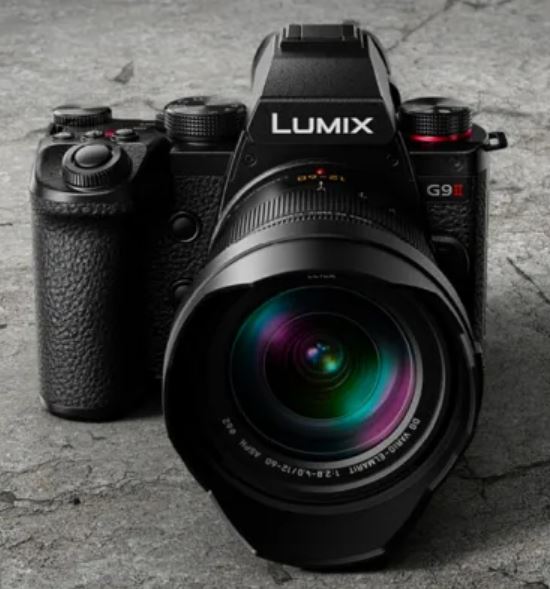
Panasonic G9 II, boasts a new 25.2 million pixel image sensor and a new engine, above all the image plane phase-detection AF guarantees sharp, precise focus, while the 60fps AFC continuous shooting. The camera also features up to 8.0 stops of image stabilization and 4K/4 K 60p 4:2:2 10bit recording and comes with a pre-installed V-Log, providing more flexibility for post-production. The camera also supports C4K/4K 10bit 120p/100p, enabling super slow-motion video capture. More Details below
Panasonic G9 II Specification
- New 25.2 million pixel image sensor
- new engine
- Image plane phase detection AF
- 60fps AFC continuous shooting
- 8.0 stops of image stabilization
- 7.5 steps Dual IS
- C4K/4K 60p 4:2:2 10bit
- V-Log
- 1.84 million dot tilt free angle monitor
- 3.68 million dot OLED viewfinder
- Dustproof and splashproof
- Capable of continuous shooting for 3 seconds without blackout
- Pre-continuous shooting function
- ~AFS 75fps
- LEICA Monochrome with L2 technology
- Real-time LUT
- C4K/4K 10bit 120p/100p
- 8 direction joystick
- Wifi
- Bluetooth
- Lineup covering from 16mm to 1600mm (35mm format equivalent)
Stay tuned more updates coming
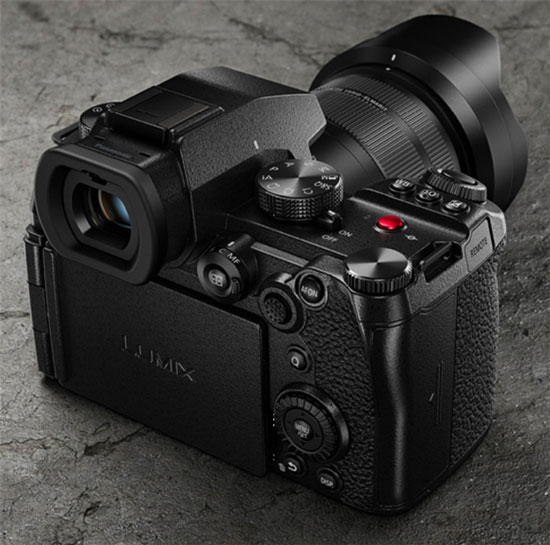
Follow us on our social pages FACEBOOK | TWITTER | INSTAGRAM, to get LIVE News and Panasonic Rumor
source asobinet.com
By admin, on September 11th, 2023
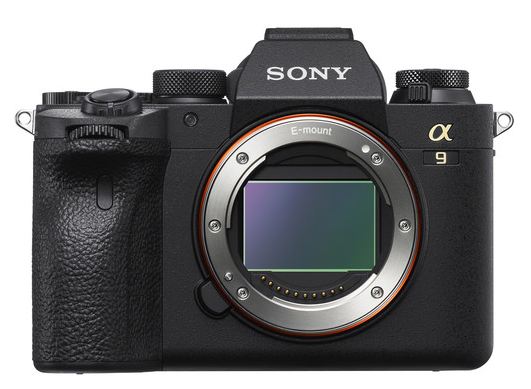
Sony A9 III registered on Sep 4, 2023. This camera supports 5.1G, which usually means it’s a mid-range to high-end camera. Based on Sony previous announcement patterns we are expecting the arrival of the Sony A9 III camera sometime between Nov to Jan 2023.
Sony Cameras registration vs. official announcement date
– ZV-E1 was registered on December 12th and announced on March 29th (3.5 months)
– ZV-1II was registered on February 2nd and announced on May 23rd (3.5 months) –
α6700 was registered on February 16th and announced on July 12th (4 months)
– α7CII and α7CR were registered on June 12th and announced on August 29th (2.5 months)
Take a look at the set of rumored specifications of the Sony A9 III camera
Sony A9 III Specification [Rumored]
- 50MP Full-Frame Exmor RS BSI CMOS Sensor
- Up to 60 fps Shooting, ISO 50-102400
- 8K 30p and 4K 120p Video in 10-Bit
- 3.7 m-Dot EVF (Blackout free)
- 759-Pt. Fast Hybrid AF, Real-time Eye AF
- 5-Axis SteadyShot Image Stabilization
- Dual CFexpress Type A/SD Card Slots
Stay tuned we will post an update as soon as we get an update
Follow us on our social pages FACEBOOK | TWITTER | INSTAGRAM, If you have time –>see more Sony Alpha Rumor
source SAR.com
|
KEEP THIS BLOG ALIVE - Support New Camera Buy Canon Lenses, Buy Music CD or Digital Camera at amazon it helps this site, and you do not pay anything extra, it is just a way to help support this site.

|




















